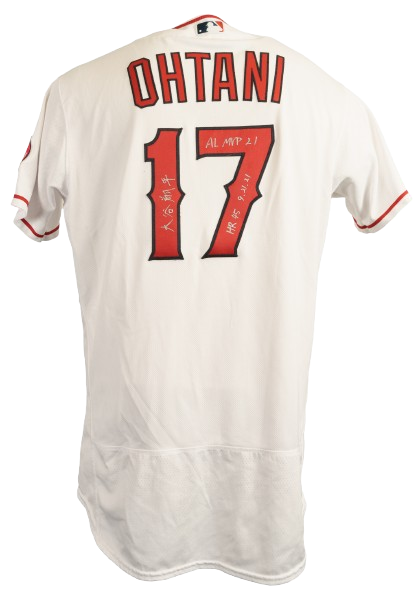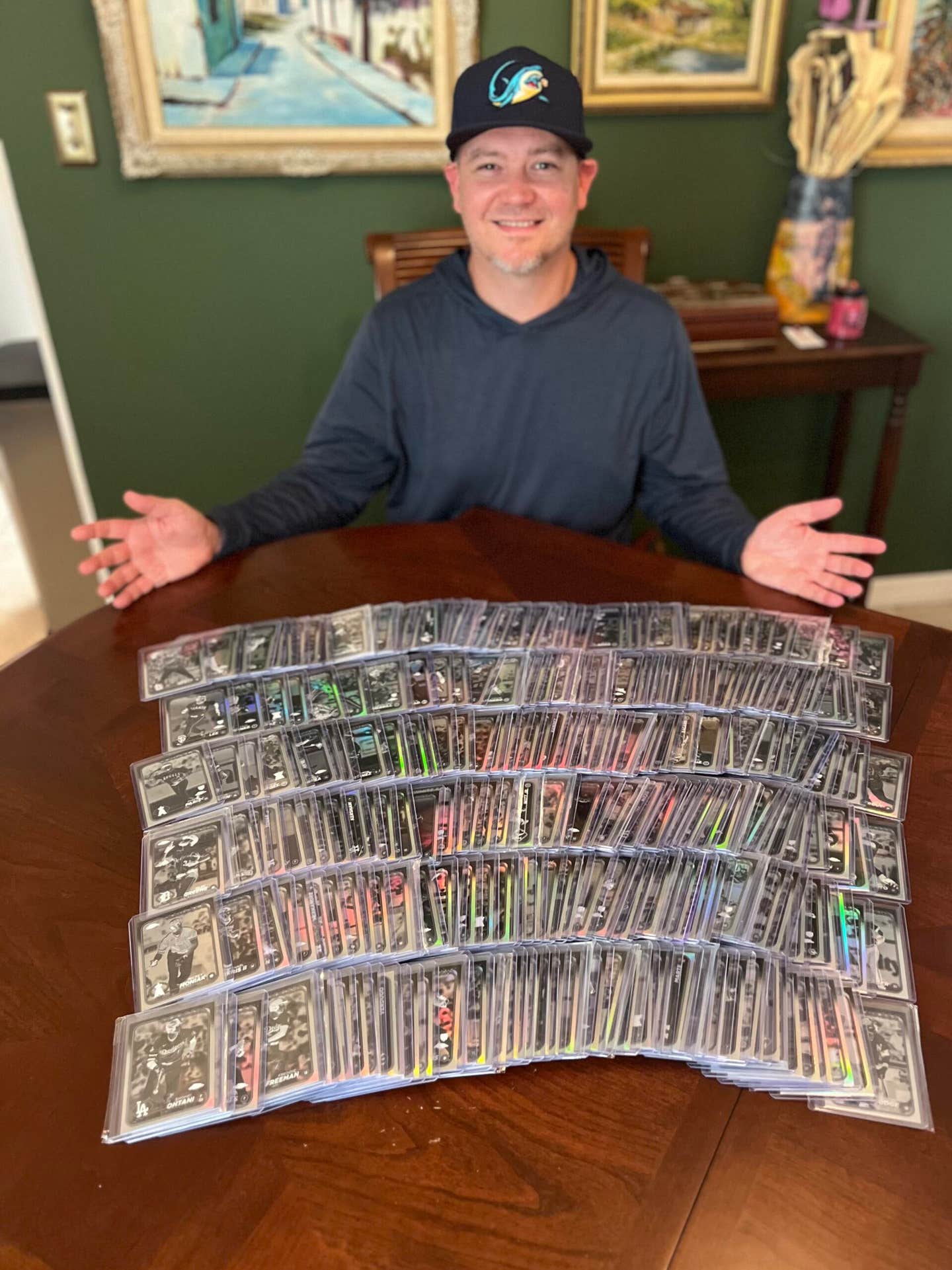Collecting 101
Knowing what to look for is half the battle
The St. Louis Rams are one of the most popular teams in the NFL where fans and collectors are concerned. With two Super Bowl appearances within the decade and with standout players such as Kurt Warner, Mark Bulger, Marshall Faulk, Tory Holt and Isaac Bruce, there is much to like about the football franchise that presently hails from the Gateway City.
Prior to 1995, the Rams called sunny, glamorous Los Angeles home. The NFC entry wore jerseys supplied by Russell Athletic during its early 1990's B.S. life - Before St. Louis. These Russell-supplied jerseys did not bear any year tagging.
The L.A. Rams jerseys from this time period featured heavy vinyl heat-pressed numbers in a traditional block style (see top photo). The player's names were also a heavy vinyl, heat-pressed to a plate in a sans serif block style. The distinctive "horns" on the sleeves were a knit insert, separating the sleeve from the shoulder. The shoulders, sleeves and body were mesh. The team wore blue jerseys at home. The horn insert, collars and numbers were yellow gold. The player's name was done in white. The road/white jerseys sported blue numbers, player's name and collar. The road/white also featured a yellow gold sleeve with blue horn insert.
The Rams left the glitz, glamour and grass of L.A. for the Midwestern sensibilities and the turf in St. Louis in 1995. The attraction of a brand new domed stadium in the "Show Me" state was a primary factor driving the move. The St. Louis Rams continued to wear Russell Athletic jerseys, and would do so through 1996. In celebration of the 1995 inaugural season in St. Louis, the team wore a commemorative patch on the front left of the jersey, where the shoulder connected with the chest.
In 1997, the Rams dressed in jerseys supplied by Wilson. In 1998, the team switched to Logo Athletic supplied jerseys. The Logo Athletic arrangement with the NFL lasted only for that season. For the 1999 season that culminated in a Super Bowl championship, Puma was the jersey maker of choice. With the switch to Puma, the team began utilizing the year and size-strip tag inside of the jersey cowl. The arrangement with Puma would extend through 2000.
The 2000 Rams season saw a significant fashion makeover for the team's Puma-supplied game uniforms and sideline apparel. Gone were the familiar shades of dark blue and yellow gold. Even more conspicuous by their absence was the horn inserts on the jersey sleeves.
The new millennium St. Louis Rams color scheme became the aptly named Millennium Blue, New Century Gold, and white. The blue is darker, and the gold is truer, lacking the yellow that was employed for decades (see middle photo). When the new century uniform change was made, the familiar gold horn logo was retained for the helmet, however that gold was now the "New Century" shade and of course the helmet became "Millennium Blue."
The uniform change for the new millennium saw tackle-twill numbers and player's names take over for the vinyl heat-pressed variety. Replacing the horn logo on the jersey sleeve is an angry, determined looking ram's head. This ram's head logo is a sewn-on patch. On the home/blue jerseys, the numbers changed to New Century Gold, trimmed with good, old-fashioned, timeless white. The number font remained a common, block variety. The player's name is white with no trim and still a block variety sans serif. The new gold was also adopted for the collar, as well as a spandex insert separating the shoulder from the sleeve.
On the blue jersey, the gold insert is bordered on the sleeve side with white. The jersey shoulders and sleeves were changed from mesh to the satin type of material common on NFL jerseys. An embroidered "Rams" crest was added to the chest, immediately below the apex of the collar. The year and size indicator tag inside of the cowl became standard equipment.
The differences between the home/blue and road/white jersey starting in 2000 are that with the road jersey the new blue numbers are trimmed with gold. The collar became blue, as well as the player's name. The spandex insert separating the shoulder and sleeve became solid gold. The sleeve is now blue and like the home jersey, is bedecked with that angry, determined ram's head. What the ram is angry about and determined to do is anybody's guess.
In 2001, Reebok took over the job of supplying the Rams with game jerseys, and with that came subtle changes in their appearance. The number font was modified to a somewhat hipper, rounded look (see bottom photo). Also, the spandex side panels became gold, as opposed to maintaining the blue or white jersey color. Like all NFL teams, Reebok continues to supply the Rams to this day.
The 2002 season saw yet another minor change being made to the St. Louis Rams game jerseys. The gold spandex panels were changed back to the color of the jersey itself. This change remains in effect today, as does the 2001 number font change.
I have had the privilege of handling a significant number of 1990's and 2000's L.A. and St. Louis Rams jerseys. Through the handling of so many of these jerseys, I have seen some peculiarities and some fine "craftsmanship" that are worth noting.
One of the unusual and notable modifications I have encountered with 2000 or later Rams jerseys are a few 2000 season jerseys with Reebok logos having been sewn over the Puma sleeve icons by the team tailor. You may ask: "What's so odd about that?" It is not uncommon for a team to recycle jerseys from the last year of the previous supplier into the first year of the next. Yes, that is true, but the jerseys I am speaking of still retained the old, block-number style. Remember that with Reebok came a new number font.
The team certainly couldn't put players on the field with the Puma font juxtaposed with players wearing the Reebok font. As to why these Puma jerseys were sleeve tagged with Reebok icons yet did not receive Reebok numbers is beyond me.
I have in my inventory a small number of 2001 tagged Rams jerseys that were not used until 2002, since the players who wore them weren't with the squad in '01. The spandex side panels on these 2001 tagged shirts are the same color as the jerseys and not the gold as described above. The team either replaced the gold panels to make the jerseys usable for '02, or, there were some 2001 jerseys that were for whatever reason manufactured with blue or white sides and not gold.
Though the team did not year tag the Russell Athletic, Wilson and Logo Athletic jerseys, you will occasionally find one of these shirts with a year indicator written on the supplier's tail tag by an equipment staffer. For example, I have handled a small number of Russell jerseys with 3, 4, or 6 written on the tail tag, which would have corresponded with the year the jersey was worn. Likewise, I have seen some Wilson supplied Rams jerseys with a numeral 7 written on the tail tag.
I mentioned "craftsmanship" earlier in this piece. Primarily, I am referring to the repairs on 1990s and 2000s Rams jerseys. These repairs are in my opinion the neatest, most meticulously done of any football jerseys I have ever seen. Whoever does the sewing for the Rams does so with a great deal of pride and attention to detail. There is scarcely a wasted inch of thread on this fine work. Also, any Rams jerseys that I have seen bearing customization or shortening look as though it was done with tender, loving care - not unlike how your mom may have fixed a favorite clothing item for you as a chi ld.








